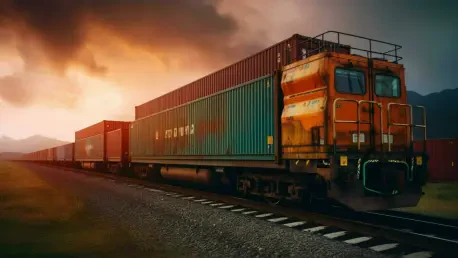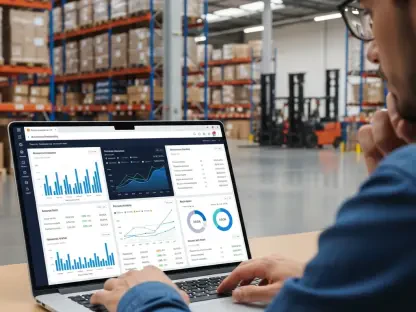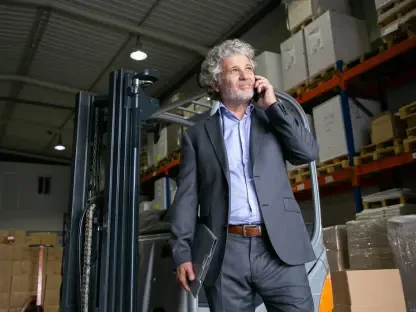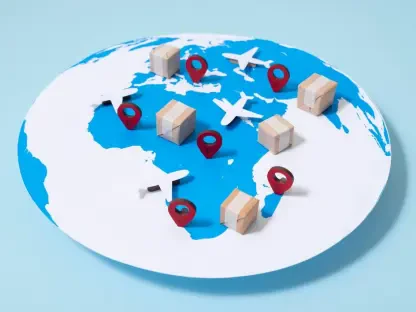Overview of Indian Railways’ Global Ascent
In a remarkable testament to infrastructural prowess, Indian Railways has clinched the second position in global freight rankings, outpacing established giants like the United States and Russia with an unprecedented volume of cargo moved across its vast network. This achievement marks a pivotal moment for India, positioning the nation as a formidable logistics powerhouse on the world stage. The scale of this accomplishment is staggering, reflecting years of strategic planning and execution in rail transport.
Indian Railways operates one of the largest rail networks globally, spanning over 68,000 kilometers and serving as a lifeline for both freight and passenger services. This extensive system connects remote regions to bustling industrial hubs, playing an indispensable role in national connectivity. Its freight segment, in particular, has become a cornerstone of economic activity, transporting goods ranging from coal to consumer products.
The surge to this global ranking is fueled by substantial technological advancements and infrastructure investments. Modernization efforts, including digitized operations and upgraded facilities, have enhanced efficiency, while government-backed projects have expanded capacity. These developments signal a transformative era for Indian Railways, setting a benchmark for logistics excellence.
Freight Volume Growth and Infrastructure Milestones
The Role of Dedicated Freight Corridors (DFCs)
Central to Indian Railways’ ascent are the Dedicated Freight Corridors (DFCs), comprising the Eastern and Western corridors that together cover 2,800 kilometers of high-capacity tracks. The Eastern DFC links Ludhiana in Punjab to Sonnagar in Bihar, while the Western DFC connects Jawaharlal Nehru Port in Mumbai to Dadri near Delhi. These corridors are fully operational as of this year, revolutionizing freight movement across key economic zones.
The DFCs are designed to handle 300-325 trains daily at speeds of 50-60 km/h, a significant leap from the 20-25 km/h on conventional mixed-traffic lines. This increased speed translates to shorter transit times, enabling faster delivery of goods. Additionally, the corridors have decongested traditional routes, improving overall network productivity and reducing strain on parallel road systems.
Beyond operational gains, the DFCs contribute to broader benefits like alleviating road traffic bottlenecks. By shifting a substantial portion of freight from highways to rail, these corridors mitigate wear on road infrastructure and cut down on vehicular emissions. This strategic infrastructure has become a game-changer, reinforcing India’s logistics framework with sustainable solutions.
Performance Metrics and Future Projections
Freight volumes handled by Indian Railways have seen a robust increase, reaching 1.61 billion tons annually as of now, with over 10% of this cargo moving through DFC routes. This growth trajectory is supported by significant government investments in modern locomotives, advanced terminals, and cutting-edge signaling systems. Such enhancements ensure reliability and scalability in operations.
Looking ahead, from this year to 2027, projections indicate a continued rise in freight capacity, potentially reducing logistics costs across industries. Analysts estimate that this efficiency could bolster the transport sector’s contribution to India’s GDP by up to 0.5%. Lower costs and faster transit times are expected to attract more businesses to rail transport, fostering economic competitiveness.
These developments also pave the way for foreign investment, as global players recognize India’s potential as a logistics hub. Improved freight infrastructure not only supports domestic trade but also positions the country as a critical link in international supply chains. The ripple effects of this growth are poised to stimulate industrial output and regional development.
Challenges in Scaling Freight Operations
Despite the impressive strides, scaling freight operations presents notable challenges for Indian Railways. Integrating the high-speed DFC routes with existing mixed-traffic lines remains complex, often leading to operational inefficiencies at junction points. Ensuring seamless connectivity across diverse track systems requires meticulous planning and execution.
High initial costs of infrastructure projects pose another hurdle, with substantial capital required for construction and technology upgrades. Delays in project timelines, often due to land acquisition disputes or regulatory approvals, further complicate expansion efforts. These bottlenecks threaten to slow down the momentum of growth if not addressed promptly.
To navigate these issues, strategies such as public-private partnerships are being explored to share financial burdens and expertise. Phased implementation of upgrades can also mitigate risks, allowing for gradual integration of new systems. Addressing these challenges head-on will be crucial to sustaining the upward trajectory of freight operations.
Policy and Regulatory Framework Supporting Growth
The Indian government has played a vital role in propelling rail freight through substantial budget allocations aimed at modernizing infrastructure. These funds support the expansion of tracks, procurement of efficient rolling stock, and deployment of safety mechanisms. Such financial backing underscores a commitment to transforming the railway sector.
Regulatory frameworks have been instrumental in ensuring safety and efficiency in freight operations. Stringent standards for maintenance and compliance help minimize accidents and disruptions. Moreover, policies are increasingly aligned with environmental goals, promoting a modal shift from road to rail to curb CO2 emissions and support sustainability.
This policy environment fosters an ecosystem where innovation and growth can thrive. Incentives for private sector involvement and streamlined approval processes for projects enhance operational agility. By balancing economic objectives with ecological considerations, these regulations lay a strong foundation for long-term progress in rail logistics.
Future Prospects for Indian Railways
Emerging trends point to an exciting future for Indian Railways, with plans for further expansion of DFC networks to cover additional high-traffic routes. Adoption of advanced technologies, such as automated signaling and real-time tracking, promises to elevate operational precision. These innovations are set to redefine standards in freight handling.
India stands on the cusp of becoming a dominant freight hub in the Asia-Pacific region, drawing significant foreign investment. Enhanced rail connectivity with ports and industrial corridors positions the country as a strategic player in global trade. This potential is amplified by a growing emphasis on intermodal logistics solutions.
However, global economic conditions and shifting trade dynamics could influence this trajectory. Volatility in international markets or changes in demand patterns may necessitate adaptive strategies. Continued investment in technology and infrastructure will be essential to maintain competitiveness and capitalize on evolving opportunities.
Conclusion
Reflecting on the transformative journey of Indian Railways, the ascent to the second spot in global freight rankings stands as a monumental achievement driven by strategic infrastructure like the Dedicated Freight Corridors. This milestone marks a significant shift in India’s logistics landscape, showcasing the power of targeted investments and policy support in elevating national capabilities.
Moving forward, a sustained focus on overcoming operational challenges through innovative partnerships and phased project rollouts is imperative. Strengthening technological integration and expanding network coverage offer viable paths to solidify India’s position in global supply chains. These steps promise to unlock further economic and environmental benefits for the nation.
Additionally, aligning with global trade trends and prioritizing sustainability emerge as critical considerations for future growth. By fostering resilience against economic fluctuations and embracing digital advancements, Indian Railways can redefine logistics efficiency. This proactive approach ensures that the momentum gained translates into lasting impact on both domestic and international fronts.









